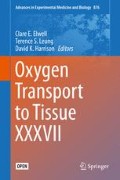Abstract
Systematic studies on the oxygenation status of solid tumors have shown that the development of hypoxic/anoxic tissue subvolumes is a pathophysiological trait in a wide range of human malignancies. As a result of this characteristic property, adenosine (ADO) accumulation (range: 50–100 μM) occurs caused by intra- and extracellular generation of ADO. Extracellular nucleotide catabolism by hypoxia-/HIF-1α-sensitive, membrane-associated ecto- 5′- nucleotidases most probably is the major source of ADO in the halo of cancer cells upon specific genetic alterations taking place during tumor growth. Extracellular ADO can act through autocrine and paracrine pathways following receptor-binding and involving different intracellular signalling cascades. Hypoxia-driven receptor activation can lead to a broad spectrum of strong immune-suppressive properties facilitating tumor escape from immune control (e.g., inhibition of CD4+, CD8+, NK and dendritic cells, stimulation of Treg cells). In addition, tumor growth and progression is promoted by ADO-driven direct stimulation of tumor cell proliferation, migration, invasion, metastatic dissemination, and an increase in the production of molecules stimulating tumor angiogenesis. Hypoxia- driven ADO accumulation in the tumor microenvironment thus plays a critical role in tumor growth and progression at multiple pathophysiological levels.
Access this chapter
Tax calculation will be finalised at checkout
Purchases are for personal use only
References
Vaupel P, Höckel M, Mayer A (2007) Detection and characterization of tumor hypoxia using pO2 histography. Antioxid Redox Signal 9(8):1221–1235
Vaupel P, Mayer A, Höckel M (2004) Tumor hypoxia and malignant progression. Methods Enzymol 381:335–354
Vaupel P, Mayer A (2007) Hypoxia in cancer: significance and impact on clinical outcome. Cancer Metastasis Rev 26(2):225–239
Höckel M et al (1996) Association between tumor hypoxia and malignant progression in advanced cancer of the uterine cervix. Cancer Res 56(19):4509–4515
Mayer A, Vaupel P (2013) Hypoxia, lactate accumulation, and acidosis: siblings or accomplices driving tumor progression and resistance to therapy? Adv Exp Med Biol 789:203–209
Semenza GL (2012) Hypoxia-inducible factors: mediators of cancer progression and targets for cancer therapy. Trends Pharmacol Sci 33(4):207–214
Hauber W (2002) Adenosin: ein Purinnukleosid mit neuromodulatorischen Wirkungen. Neuroforum 8:228–234
Schulte G (2004) Adenosin, Adenosinrezeptoren und Adenosinrezeptor-aktivierte Signalwege. Biospektrum 2(40):159–161
Blay J, White TD, Hoskin DW (1997) The extracellular fluid of solid carcinomas contains immunosuppressive concentrations of adenosine. Cancer Res 57(13):2602–2605
Lasley RD et al (1998) Comparison of interstitial fluid and coronary venous adenosine levels in in vivo porcine myocardium. J Mol Cell Cardiol 30(6):1137–1147
MacLean DA, Sinoway LI, Leuenberger U (1998) Systemic hypoxia elevates skeletal muscle interstitial adenosine levels in humans. Circulation 98(19):1990–1992
Spychala J (2000) Tumor-promoting functions of adenosine. Pharmacol Ther 87(2–3):161–173
Ghiringhelli F et al (2012) Production of adenosine by ectonucleotidases: a key factor in tumor immunoescape. J Biomed Biotechnol. doi:10.1155/2012/473712
Di Virgilio F (2012) Purines, purinergic receptors, and cancer. Cancer Res 72(21):5441–5447
Busse M, Vaupel P (1996) Accumulation of purine catabolites in solid tumors exposed to therapeutic hyperthermia. Experientia 52(5):469–473
Vaupel P (1994) Blood flow, oxygenation, tissue pH distribution and bioenergetic status of tumors, vol 23, Lecture. Ernst Schering Research Foundation, Berlin
Schulte G, Fredholm BB (2003) Signalling from adenosine receptors to mitogen-activated protein kinases. Cell Signal 15(9):813–827
Gessi S et al (2011) Adenosine receptors and cancer. Biochim Biophys Acta 1808(5):1400–1412
Muller-Haegele S, Muller L, Whiteside TL (2014) Immunoregulatory activity of adenosine and its role in human cancer progression. Expert Rev Clin Immunol 10(7):897–914
Antonioli L et al (2013) Immunity, inflammation and cancer: a leading role for adenosine. Nat Rev Cancer 13(12):842–857
Allard B, Turcotte M, Stagg J (2012) CD73-generated adenosine: orchestrating the tumor-stroma interplay to promote cancer growth. J Biomed Biotechnol. doi:10.1155/2012/485156
Lee C-T, Mace T, Repasky EA (2010) Hypoxia-driven immunosuppression: a new reason to use thermal therapy in the treatment of cancer? Int J Hyperthermia 26(3):232–246
Sitkovsky MV et al (2008) Hypoxia-adenosinergic immunosuppression: tumor protection by T regulatory cells and cancerous tissue hypoxia. Clin Cancer Res 14(19):5947–5952
Kumar V (2013) Adenosine as an endogenous immunoregulator in cancer pathogenesis: where to go? Purinergic Signal 9(2):145–165
Young A et al (2014) Targeting cancer-derived adenosine: new therapeutic approaches. Cancer Discov 4(8):879–888
Sikovsky MV et al (2014) Hostile, hypoxia-A2-adenosinergic tumor biology as the next barrier to overcome for tumor immunologists. Cancer Immunol Res 2(7):598–605
Ohta A, Sitkovsky M (2014) Extracellular adenosine-mediated modulation of regulatory T cells. Front Immunol. doi:10.3389/fimmu.2014.00304
Antonioli L et al (2014) Adenosine pathway and cancer: where to go from here? Expert Opin Ther Targets 18(9):973–977
Iannone R et al (2013) Blockade of A2b adenosine receptor reduces tumor growth and immune suppression mediated by myeloid-derived suppressor cells in a mouse model of melanoma. Neoplasia 15(12):1400–1409
Sitkovsky M et al (2008) Adenosine A2A receptor antagonists: blockade of adenosinergic effects and T regulatory cells. Br J Pharmacol 153(S1):S457–S464
Merighi S et al (2003) A glance at adenosine receptors: novel target for antitumor therapy. Pharmacol Ther 100(1):31–48
Häusler SF et al (2014) Anti-CD39 and anti-CD73 antibodies A1 and 7G2 improve targeted therapy in ovarian cancer by blocking adenosine-dependent immune evasion. Am J Transl Res 6(2):129–139
Author information
Authors and Affiliations
Corresponding authors
Editor information
Editors and Affiliations
Rights and permissions
Copyright information
© 2016 Springer Science+Business Media, New York
About this paper
Cite this paper
Vaupel, P., Mayer, A. (2016). Hypoxia-Driven Adenosine Accumulation: A Crucial Microenvironmental Factor Promoting Tumor Progression. In: Elwell, C.E., Leung, T.S., Harrison, D.K. (eds) Oxygen Transport to Tissue XXXVII. Advances in Experimental Medicine and Biology, vol 876. Springer, New York, NY. https://doi.org/10.1007/978-1-4939-3023-4_22
Download citation
DOI: https://doi.org/10.1007/978-1-4939-3023-4_22
Publisher Name: Springer, New York, NY
Print ISBN: 978-1-4939-3022-7
Online ISBN: 978-1-4939-3023-4
eBook Packages: Biomedical and Life SciencesBiomedical and Life Sciences (R0)

